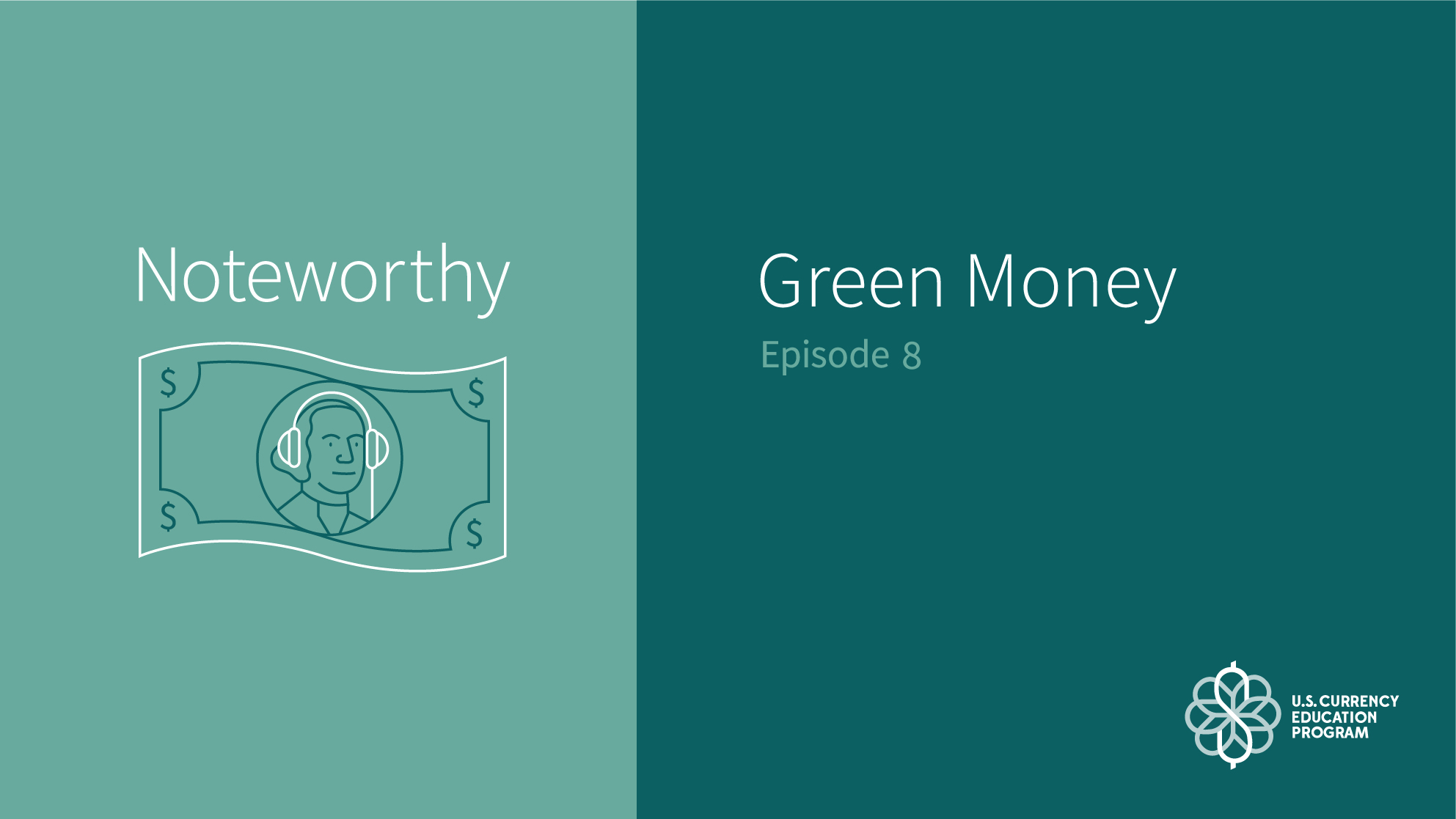Green Money
[INTRO MUSIC PLAYS]
ALEX: Hello, everyone! Thanks for tuning in to episode eight of Noteworthy, a podcast from the U.S. Currency Education Program. My name is Alex, and in this episode we’re talking about what happens to currency at the end of its life. Joining me is Keaton.
KEATON: Hello, listeners! So Alex, I know that there are 28 Reserve Bank cash offices located across the country that are responsible for processing currency and sorting it to make sure the currency is authentic and fit for circulation. These offices provide cash services to approximately 8,400 banks, savings and loans, and credit unions in the United States. If a cash office finds a bill that is not authentic while sorting currency, they send the bill to the Secret Service. But what happens if the cash office finds a bill that is authentic but too worn for continued use? Is it just shredded?
ALEX: That’s a great question Keaton. Once cash is old and worn, it is replaced with new bills, which means the old cash must be destroyed. Believe it or not, Reserve Bank cash offices used to burn old money that was in need of disposal. Special incinerators were installed to get the job done. In fact in 1953, the Federal Reserve Bank of Richmond reported destroying an average of $700,000 a day in United States Notes and Silver Certificates.
KEATON: Holy smokes. I can’t even imagine what that was like.
ALEX: No kidding! Today things are a little different. In 2017, the Federal Reserve recycled 85 percent of the currency it shredded. That’s more than 4,000 tons of money! This is a pretty significant change, because before 2010, only a third of shredded cash was recycled.
KEATON: So when you say recycled, what exactly does that mean?
ALEX: Well, there are a number of different things that recycled currency can be used for. For example, shredded currency can be used to create insulation for houses.
KEATON: Wow. I would have never thought of that. I’ve got to wonder if that increases the value of your property…just kidding!
ALEX: [Laughs] Very funny. Shredded currency is also used to create compost piles that ultimately become fertilizer. Can you imagine putting that in your garden?
KEATON: Definitely not! That is so interesting. Again, I would have never expected that. Are there other ways shredded currency is recycled?
ALEX: Well, the Federal Reserve Bank of San Francisco partners with green facilities to provide electricity for local businesses and homes. In this case, when the shredded currency is burned, it’s done in an eco-friendly power-generation plant. The facility they use in Los Angeles generates enough electricity annually for 15,000 to 20,000 homes.
KEATON: That’s really amazing. It’s great to hear that the life of old currency isn’t ending at all, it’s just beginning again in a new way.
ALEX: So true. The way that shredded currency is recycled is dependent on local vendors and businesses, so how shredded cash is recycled in California is likely different from what happens in Louisiana.
KEATON: That makes sense. I like that the recycling method has a flavor of the local economy.
ALEX: Definitely. So next time you’ve got cash in your wallet, imagine what the future may hold for those bills.
KEATON: I hope mine are used as fertilizer in a garden; I just think that’s so cool. Listeners, if you are interested in learning more about the life cycle of your money, be sure to visit uscurrency.gov.
ALEX: Until next time, thanks for listening to another episode of...
TOGETHER: Noteworthy!
[EXIT MUSIC PLAYS]

